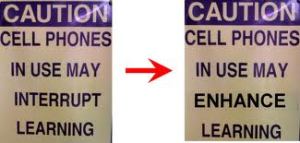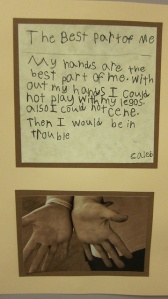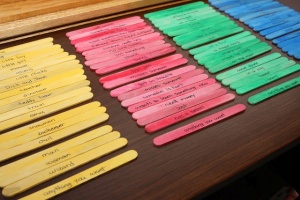The article, 5 Reasons to Allow Students to Use Cell Phones in Class, was a very interesting article that explores reasons why prohibiting cell phones is a bad policy. The most interesting reason is that cell phones are part of the 21st century skills. Phones could be used to collaborate. Before this class, I was dead set on not allowing any form of mobile device in the classroom due to its distractions. Reading this article has made me realize it may not be the worse idea. Instead of banning it, we can incorporate it into our lessons. The world is changing. I grew up at a time when I didn’t get my first cell until college because it wasn’t necessarily common for everyone to have a cellphone. Now everyone seems to have a cell phone, even as young as third grade! It’s odd to me, but I have to get used to it.
The article states that by banning cell phones, kids will not learn the responsible ways of technology. It is important for kids to know about cyber bullying and other technological dangers that may occur. Our role as teachers must be to teach kids how to be safe. Because this is a 21st century skill, we must teach our students the safe way of using a cell phone.
Personally, I don’t think cell phones should be banned from schools, but it should be monitored. Cell phones should not be out on the desks at all times like it is in college. Instead, teachers should utilize cell phone use for some assignments. I realized that just because I grew up at a time when cell phones were not owned by every single person, doesn’t mean I should penalize the new technological age. I should work and adapt to it.







